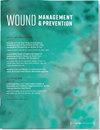Effect of Topical Application and/or Systemic Use of Red Ginseng Extract on Wound Healing in Rats With Experimentally Induced Diabetes.
IF 1
4区 医学
Q4 DERMATOLOGY
引用次数: 0
Abstract
BACKGROUND Red ginseng (Rg) is an herbal product that has been used in traditional medicine in Asian and European countries for many years. PURPOSE To study the effects of Rg extract on wound healing when used systemically, locally, or in combination in rats with experimentally induced diabetes. METHODS A total of 60 rats were randomly divided into 4 groups: saline (control), local Rg (LRg), systemic Rg (SRg), and local + systemic = combined Rg (CRg). A full-thickness wound (2 cm × 1 cm) was created on the back of the rats, and treatment protocols were carried out for 14 days. Wound areas of all rats were measured on days 0 and 14. Tissue samples were taken from the wound areas for histopathologic evaluation of inflammation, epithelialization, and fibrosis. Vascular endothelial growth factor (VEGF), CD4+, and CD8+ expressions were examined by immunohistochemistry. RESULTS Wound contraction measurements were 63.8%, 80.5%, 88.5%, and 86.6% in the control, LRg, SRg and CRg groups, respectively. Although significant differences were observed for all treated groups (LRg, SRg, and CRg) compared with the control group in terms of wound contraction, there was no difference among the treatment groups. VEGF-positive vessel/mm2 was observed 4.00 ± 0.75, 5.93 ± 0.70, 5.93 ± 1.93, and 7.93 ± 0.70 in the control, LRg, SRg and CRg groups, respectively. There was no difference between LRg and SRg in terms of VEGF expression, but there was significant difference for all other groups compared with each other. CONCLUSION All usage methods of Rg extract increased wound contraction, and differences were observed compared with the control group. However, the authors believe that the combined usage was more effective due to higher VEGF expression levels and lower CD4+:CD8+ ratio.红参提取物的局部应用和/或全身应用对实验性糖尿病大鼠伤口愈合的影响。
人参(Rg)是一种草药产品,在亚洲和欧洲国家的传统医学中使用了多年。目的研究Rg提取物在实验性糖尿病大鼠全身、局部或联合使用时对伤口愈合的影响。方法将60只大鼠随机分为4组:生理盐水(对照组)、局部Rg(LRg)、全身Rg(SRg)和局部+全身=联合Rg(CRg)。在大鼠背部形成全层伤口(2cm×1cm),并进行为期14天的治疗方案。在第0天和第14天测量所有大鼠的伤口面积。从伤口区域采集组织样本,用于炎症、上皮化和纤维化的组织病理学评估。通过免疫组织化学检测血管内皮生长因子(VEGF)、CD4+和CD8+的表达。结果对照组、LRg组、SRg组和CRg组的声收缩率分别为63.8%、80.5%、88.5%和86.6%。尽管在伤口收缩方面,所有治疗组(LRg、SRg和CRg)与对照组相比都有显著差异,但治疗组之间没有差异。对照组、LRg组、SRg组和CRg组VEGF阳性血管/mm2分别为4.00±0.75、5.93±0.70、5.93士1.93和7.93士0.70。LRg和SRg在VEGF表达方面没有差异,但所有其他组之间存在显著差异。结论Rg提取物的各种使用方法均能增加创面收缩,与对照组比较有显著性差异。然而,作者认为,联合使用更有效,因为VEGF表达水平更高,CD4+:CD8+比率更低。
本文章由计算机程序翻译,如有差异,请以英文原文为准。
求助全文
约1分钟内获得全文
求助全文
来源期刊

Wound management & prevention
Nursing-Medical and Surgical Nursing
CiteScore
1.70
自引率
8.30%
发文量
41
期刊介绍:
Information not localized
 求助内容:
求助内容: 应助结果提醒方式:
应助结果提醒方式:


